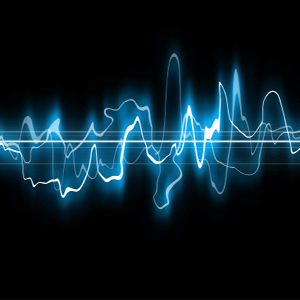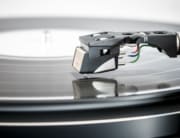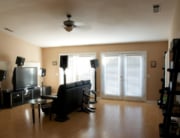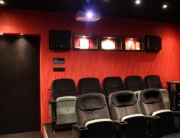You can hear it straight away. As soon as the first notes of “I Want You (She’s So Heavy)” hits, you hear an electric guitar sound as if it’s straining to push every plucked note from its strings. And yet, the guitar isn’t really turned up very loud at all. It’s this kind of distortion, not just in the guitar tone, but elsewhere in the lineup, that gives the song special meaning and character. It’s easy to dismiss distortion these days as something heard on hard rock albums, a special medium used as clay that metal rockers twist and contort into their own expertly crafted works of art. In one way or another, distortion exists in nearly every song you’ll hear today. If we can break this down even further, you’ll see distortion isn’t something to be frowned upon or, for that matter, something that can avoided at all.
Last month, Steve Guttenberg of c|net wrote an article in which he discussed distortion, explaining how it is but another tool artists and producers employ to polish the final product. As he explains it, distortion doesn’t always equate to dirty or strained guitar sounds, as noted in the Beatles example above.
“In real life,” explains Guttenberg, “a softly strummed acoustic guitar would never be heard over the drums except by altering the dynamic range of both instruments, distorting the relative sound from what the guitar and drums originally sounded like.”
Let’s return to another Beatle’s song. “I Am the Walrus” is instantly recognizable and striking because it is instantly devious and twisted. From the onset, the electric piano sounds as if it’s pulsing and breathing in waves. The strings sound as if they are quite literally strung out. Without the multiple uses of distortion employed here, “I Am the Walrus” would have sounded like something from The Beatle’s earlier catalog and not representative of the massive departure they took somewhere around REVOLVER.
Yet for all the shade which casual listeners and audiophiles alike throw towards distortion, it’s shaped the way music sounds, particularly in America. Without distortion, we wouldn’t have Hendrix playing the “Star-Spangled Banner.” Without distortion, we couldn’t hear Dylan’s jangley guitar and throaty harmonica over the drums and Wurlitzer.
It’s important to remember, of course, that distortion is best employed by the artist and not by a headphone manufacturer. If we only listen to music through common speakers — computer speakers, headphones and the like — we’re bound to hear songs riddled with distortion not of the artists’ doing.
Those with some semblance of a home theater system, therefore, have a distinct advantage over those without when it comes to listening to their favorite tunes. A combination of a great turntable, proper amplifier, and well-made speakers gives the home theater owner the ability to hear an album just as the artist and producer intended. The distortion they intentionally put in the album remains. You’ll hear a true representation of the album as opposed to hearing it through the lens of a component maker who thinks everything needs more bass.
If you’re ready to hear your favorite albums the way they’re intended to be heard, call Advanced Home Theater Systems. They’re the Texas leader in home theater design and offer the best audio components, including Cary Audio amplifiers, VPI turntables, and YG Acoustics speakers. The experts at Advanced Home Theater Systems will work with you to find the best system to match your listening room and your budget. Call (469) 656-4804 today!








